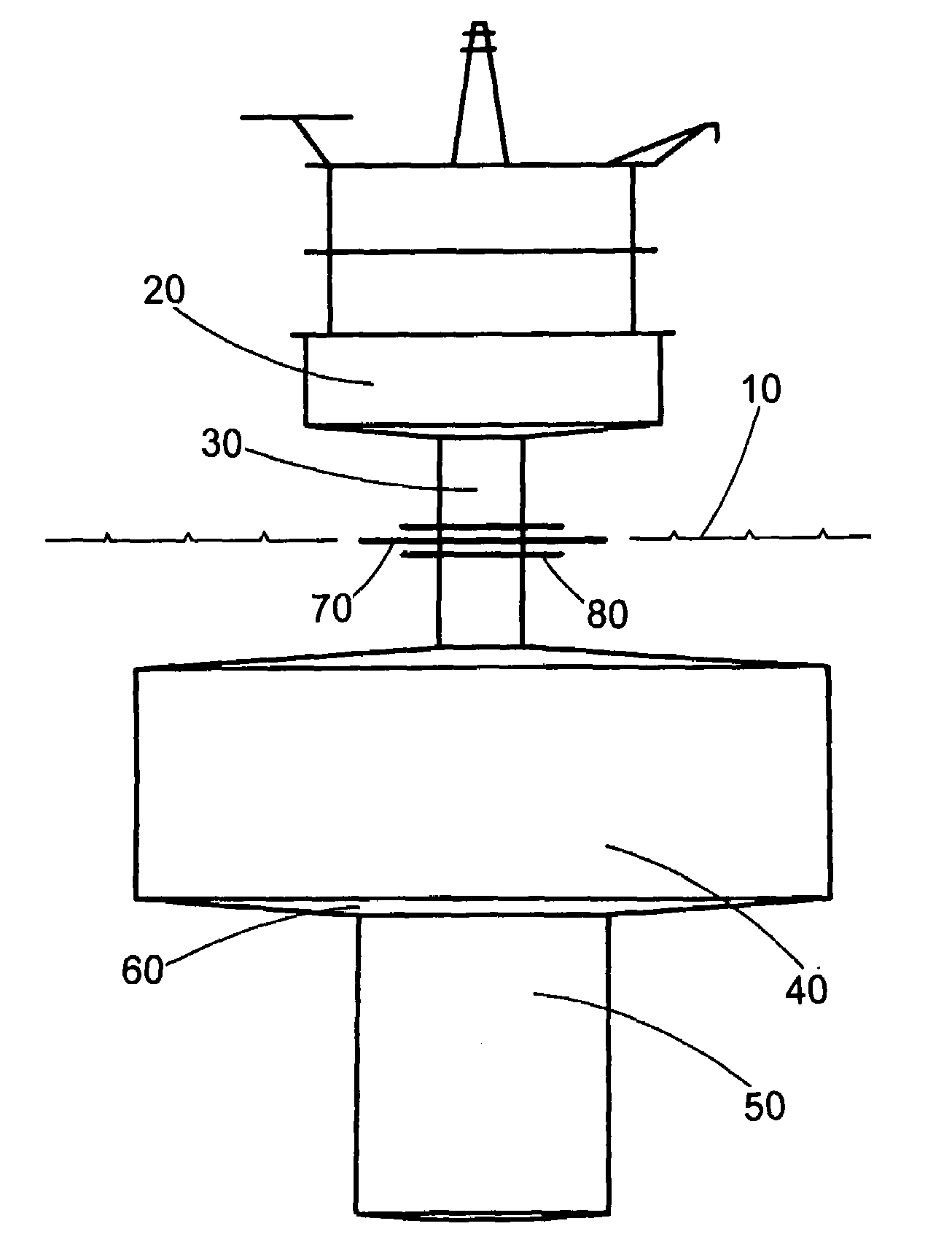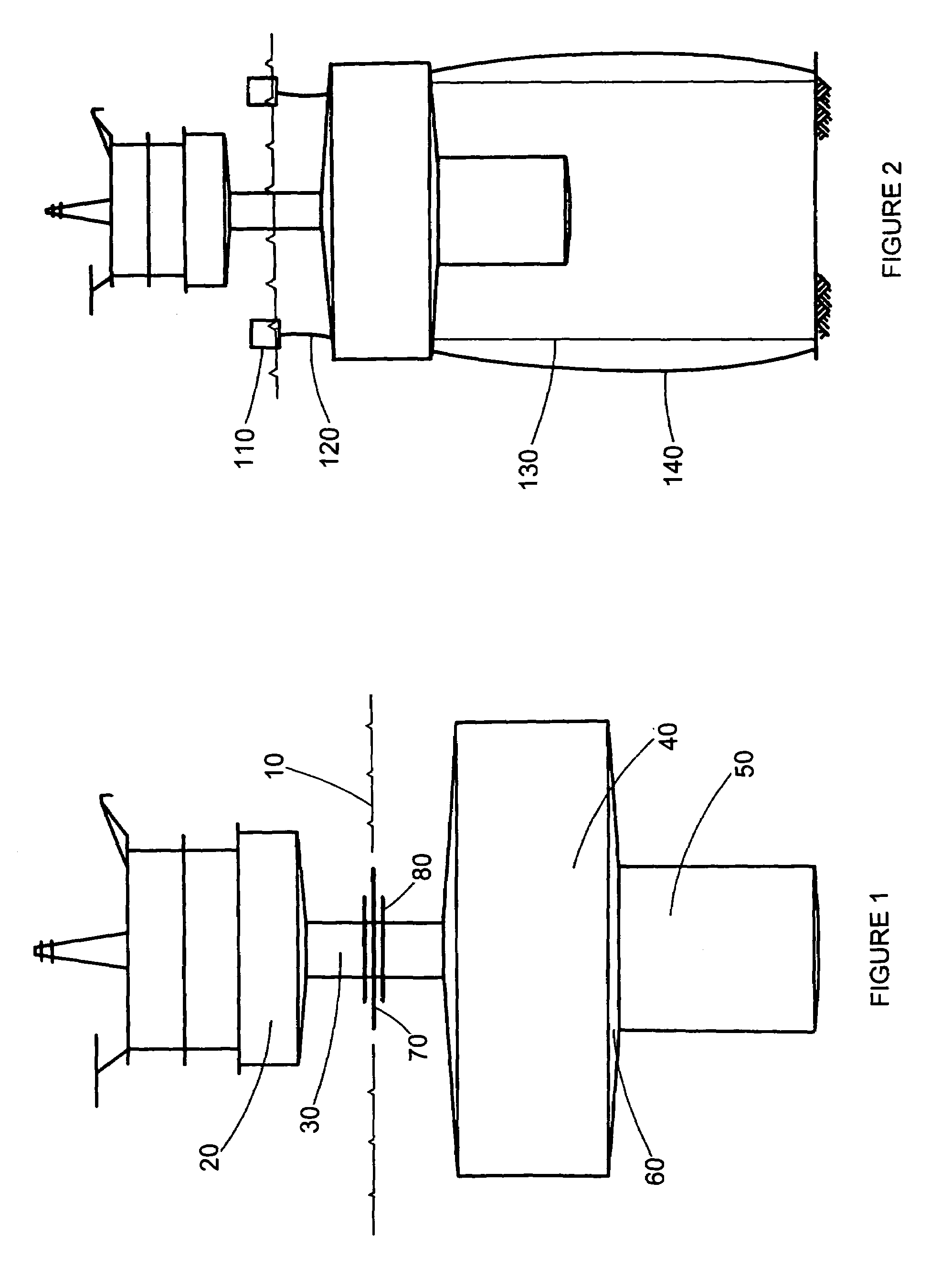Minimized wave-zone buoyancy platform
a buoyancy platform and wave-zone technology, applied in the direction of special-purpose vessels, vessel construction, transportation and packaging, etc., can solve the problems of high structure forces, excessive ancillary structures, and higher associated costs for materials, construction, installation,
- Summary
- Abstract
- Description
- Claims
- Application Information
AI Technical Summary
Benefits of technology
Problems solved by technology
Method used
Image
Examples
Embodiment Construction
Physics of Dynamics of Motion
Dynamics of motion is governed by a commonly known differential equation
MA+CV+KX=F(t)
which basically represents a balance of forces. In essence the sum of mass times acceleration, friction forces related to velocity, and distance-proportional reactive forces must be equal to the forcing function. Engineers can model complicated structures by developing mass and stiffness matrices and solve for numerical solutions. In the case of earthquake analysis, such as for an above-ground petroleum pipeline like the one in Alaska, the forcing function could be a seismic event's ground-motion that drives the structure's dynamic response over time.
[0009]As a floating production platform behaves like a rigid body bobbing in water, the dynamic equation of motion degenerates to the most basic one degree of freedom spring mass type system where the natural frequency of oscillation, ω, for the solution to the stated differential equation is defined by the following equatio...
PUM
 Login to view more
Login to view more Abstract
Description
Claims
Application Information
 Login to view more
Login to view more - R&D Engineer
- R&D Manager
- IP Professional
- Industry Leading Data Capabilities
- Powerful AI technology
- Patent DNA Extraction
Browse by: Latest US Patents, China's latest patents, Technical Efficacy Thesaurus, Application Domain, Technology Topic.
© 2024 PatSnap. All rights reserved.Legal|Privacy policy|Modern Slavery Act Transparency Statement|Sitemap


